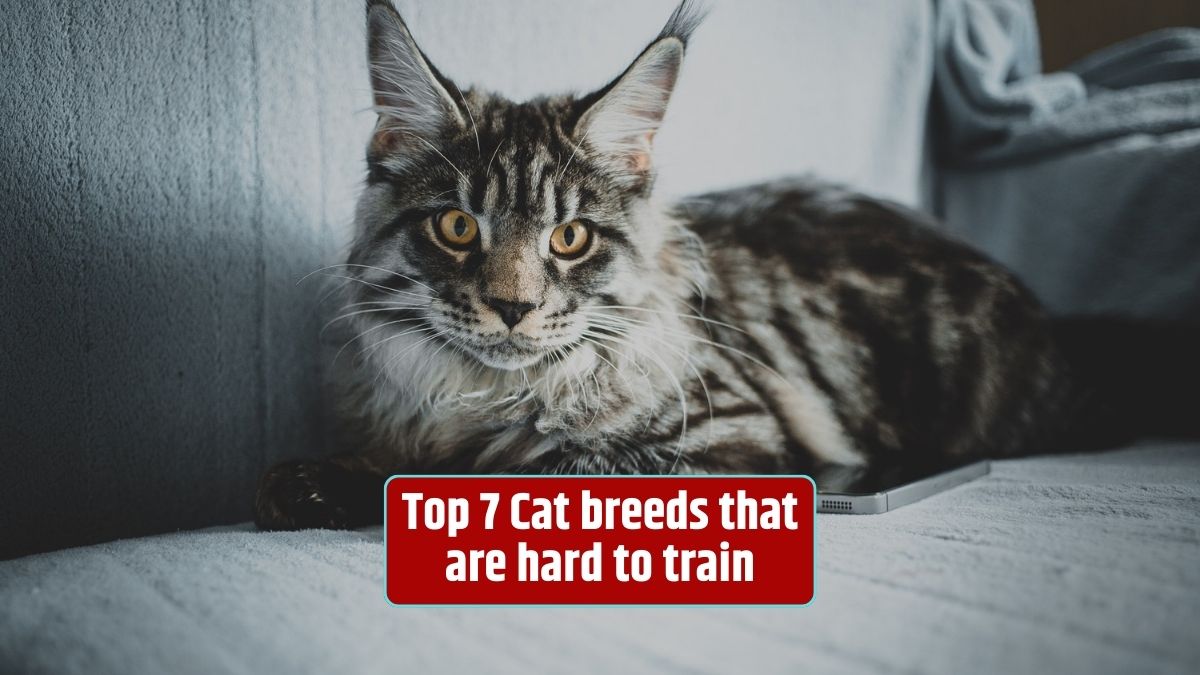Training cats can be a rewarding endeavor, but not all feline companions are equally receptive to it. While cats are known for their independence, some breeds are more amenable to training than others.
In this article, we’ll explore the top seven cat breeds known for their intelligence and individuality, making them a bit more challenging to train but also incredibly rewarding.
Siamese
Siamese cats are famous for their striking blue almond-shaped eyes and distinctive vocalizations. They are intelligent and enjoy interactive sessions but can be quite opinionated. Siamese cats might challenge your patience, but their cleverness makes them potential learners.
Maine Coon
Maine Coons are among the largest domesticated cats and are known for their friendly nature. They are intelligent but may require a gentle and patient approach to training. Once they trust their owner, Maine Coons can excel in learning tricks.
Bengal
Bengal cats are prized for their leopard-like spots and energetic personalities. Their agility and curiosity can make them challenging to focus during training, but their love for play can also be harnessed for learning.
Sphynx
Sphynx cats are hairless and known for their inquisitive nature. They are clever but may need frequent mental stimulation. Training them can be a unique experience, and they enjoy problem-solving tasks.
Abyssinian
Abyssinian cats are playful and active. They love mental challenges and excel in agility training. Keeping them engaged with interactive toys and puzzles can make training sessions more effective.
Scottish Fold
Scottish Fold cats are known for their unique folded ears and gentle demeanor. They are trainable, but their sweet nature may make them less likely to challenge authority. They can be receptive to commands.
Ragdoll
Ragdoll cats are famous for their relaxed nature. They tend to go limp when picked up, making them amenable to handling. While they may not be as quick to learn tricks, they can be trained with patience and positive reinforcement.
Conclusion
Training cats can be a test of patience, especially with these breeds known for their individuality and independence.
However, with the right approach, it’s entirely possible to teach them tricks, respond to commands, and adapt to routines. The key is to understand their unique personalities, be patient, and use positive reinforcement.
FAQs
Can any cat breed be trained, or are some more receptive than others?
While all cats can be trained to some extent, certain breeds, like Siamese, Maine Coon, Bengal, Sphynx, Abyssinian, Scottish Fold, and Ragdoll, tend to be more receptive to training due to their intelligence and temperament.
What are some common tricks that cats can learn?
Cats can learn various tricks, including sitting, staying, fetching, using a litter box, walking on a leash, and responding to their names.
How can I start training my cat at home?
Start with simple commands and use positive reinforcement, such as treats or praise when your cat follows the command correctly. Be patient and consistent in your training sessions.
Are there any specific training tools or toys that can help with cat training?
Interactive toys, puzzle feeders, and clicker training tools can be useful for engaging your cat’s mind and teaching new tricks.
Can older cats be trained, or is it easier to train kittens?
While kittens are often more receptive to training, older cats can also learn new tricks with patience and consistent training methods.









